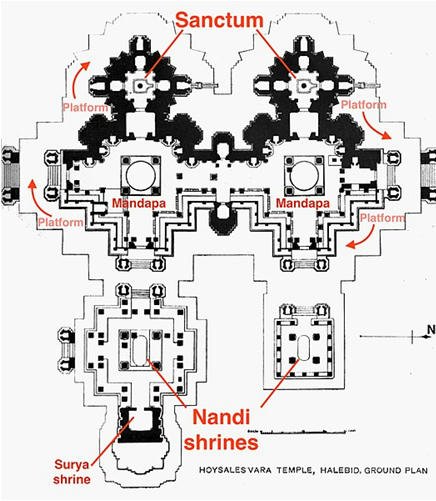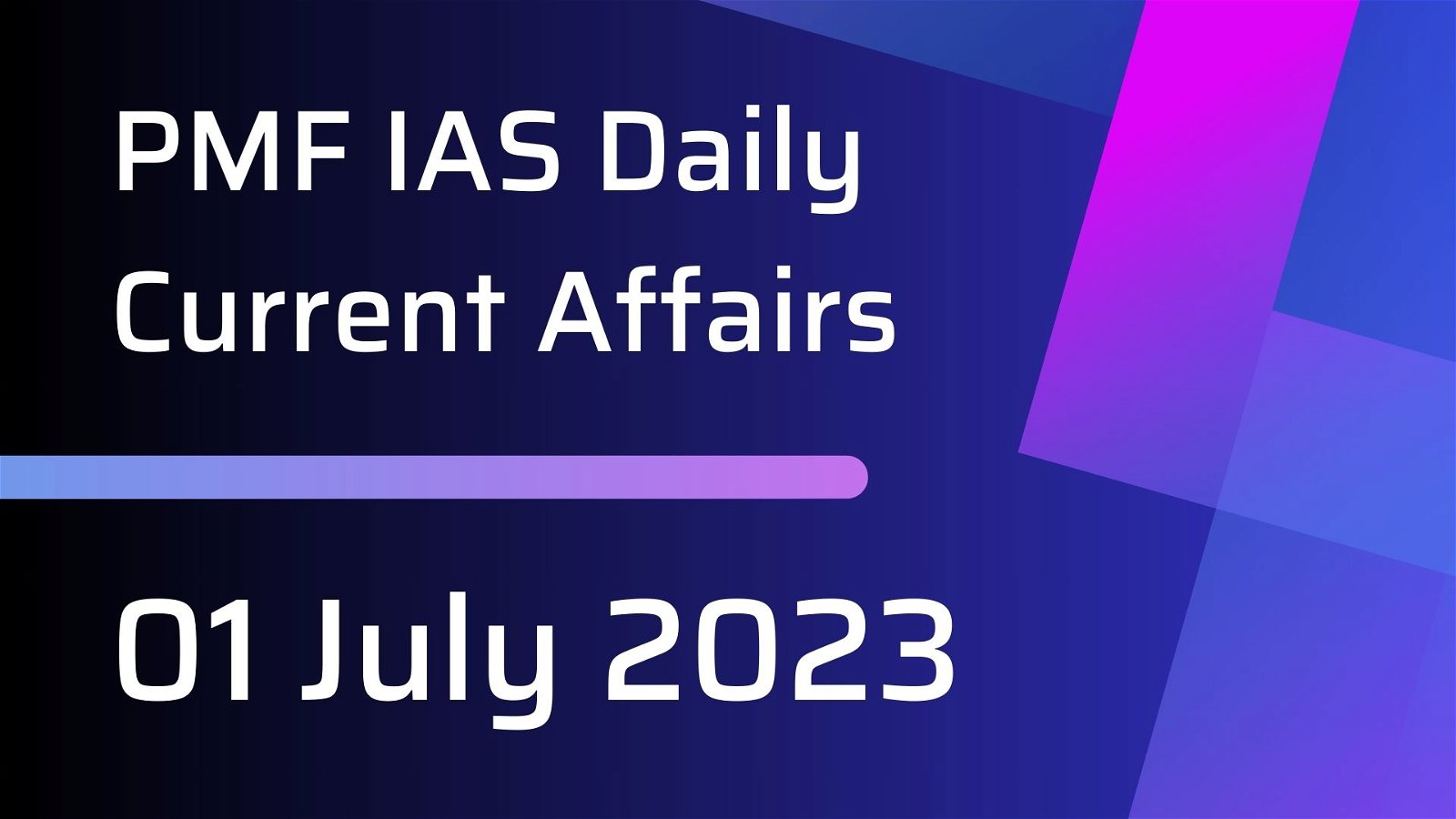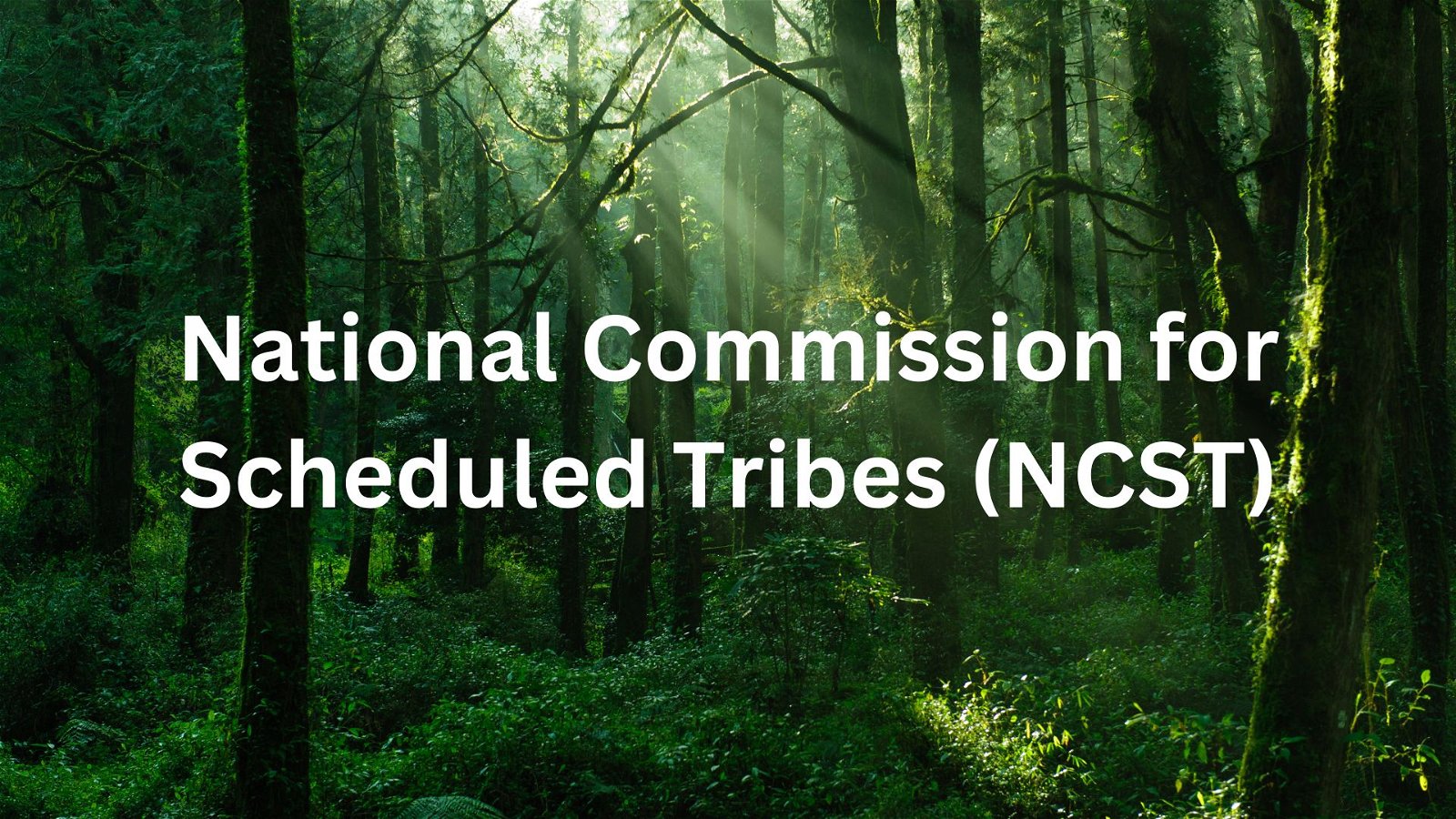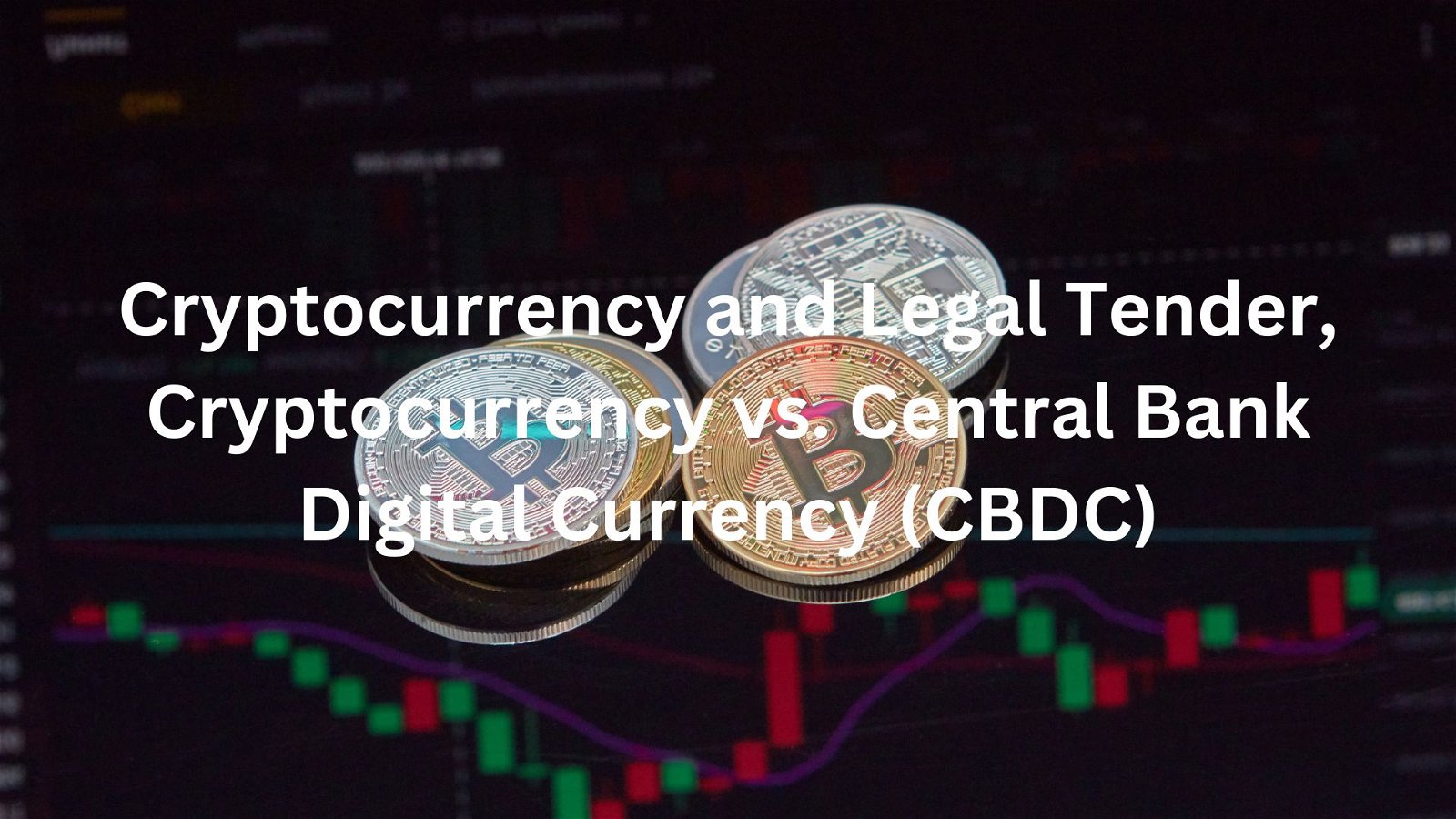
Current Affairs August 25, 2023: Linguistic Reorganization of States, BRICS, Project AMBER, Election Commission, Gita Mittal Committee, Insurance Surety Bonds, GEOAI, Chess World Cup
Subscribers of "Current Affairs" course can Download Daily Current Affairs in PDF/DOC
Subscribe to Never Miss an Important Update! Assured Discounts on New Products!
Must Join PMF IAS Telegram Channel & PMF IAS History Telegram Channel
{GS1 – MIH – Reorganization – 2023/08/25} Madras Day
- Context (IE): August 22nd is annually celebrated as Madras Day to commemorate the foundation day of the city of Madras (now Chennai).
- On this day in 1639, the town of Madrasapatnam (which expanded and developed into modern-day Chennai) was purchased by the British East India Company (EIC) from local Nayak kings.
Background
- During the 17th century, European trading powers, including the Portuguese and the EIC, competed for control over trade routes and trade posts in the Indian Ocean region.
- The Portuguese were the dominant power in the Indian Ocean at the time
- The Battle of Swally Hole was fought between EIC and the Portuguese in 1612.
- The naval fleet of British EIC under Captain Thomas Best defeated the Portuguese.
- Impressed by this victory, Emperor Jahangir granted permission to EIC in 1613 to establish the first permanent factory at Surat under Thomas Aldworth.
- The permission was granted because the Portuguese controlled the pilgrim sea route from western India to Mecca, which was resented by India’s Mughal rulers.
|
Madras Under British
Madras as Trading Post of British EIC
- The EIC established its first factory in the south in Masulipatnam in 1616. (The EIC had been trading from Masulipatnam since 1611, using it as a temporary factory).
- The second factory of the EIC in South India was Armagaum in 1629. (It was abandoned in 1641 due to its poor location and frequent attacks by the Portuguese.)
- Both Masulipatnam and Armagaum are located on the Coromandel coast in the present-day state of Andhra Pradesh.
- In 1632, the EIC got the golden farman from the Sultan of Golconda, which ensured the safety and prosperity of their trade.
- Following this, Francis Day, a member of the Masulipatnam council, in 1639 on behalf of EIC, bought the town of Madrasapatnam from the Nayaka ruler of Chandragiri.
- A fortified factory was built at Madras, which became the Fort St. George.
- It replaced Masulipatnam as the headquarters of the EIC in south India.
Reasons Why EIC Bought Madrasapatnam
Strategic Location
- Madrasapatnam was located on a strategically important peninsula on the Coromandel coast.
- It was well-situated for trade with other parts of India and the rest of the world.
Natural Harbour
- Madrasapatnam had a deep and sheltered natural harbour.
- This made it ideal for the EIC’s ships to dock and unload their cargo.
Proximity to Other European Trading Companies
- Madrasapatnam was close to other European trading companies, such as the Dutch.
- This made it a good place for the EIC to compete for trade.
Political Stability
- The region around Madrasapatnam was politically stable at the time of the purchase.
- This made it a safe place for the EIC to establish a trading post.
Better Terms with Local Rulers
- The EIC negotiated better terms with the local rulers of Madrasapatnam.
- This gave the EIC more security and control over its operations in Madrasapatnam.
Madras Presidency
- The EIC gradually acquired sovereignty over large parts of India and established the British Empire.
- They established presidencies that acted as administrative bases of the British Empire.
- Madras Presidency was established, covering large parts of present-day Tamil Nadu, Andhra Pradesh, Karnataka, and Kerala.
- The central seat of the Madras Presidency is Fort St. George in Madras.
- After the Sepoy Mutiny in 1857, the Madras Presidency came under the direct control of the British Crown through the Government of India Act, 1858.
Madras After Independence
Madras State
- After Indian Independence, the Madras Presidency became the Madras Province.
- On 26th January 1950, it was formed as Madras State by the Government of India.
Division of Madras State
- The Telugu-speaking people had been demanding a separate Andhra State for a long.
- Matters came to a flash point in 1952 when Potti Sreeramulu, a Gandhian who was fasting for an Andhra State, died after 51 days of fasting.
- In 1953, GoI appointed Justice Wanchoo Committee to look into the formation of Andhra State.
- Based on the boundaries recommended by the committee, in 1953, the Madras State bifurcated into two states, viz.,
- Andhra Pradesh comprising Telugu-speaking areas
- Madras State comprising Tamil-speaking areas.
- Then, the Linguistic Reorganization of States (1956) led to further division of the Madras State.
- Mysore State (present-day Karnataka): Kannada-speaking areas of the Madras State were merged with Mysore State, and Mysore State was enlarged.
- Kerala: Malayalam-speaking areas of the Madras State were merged with Mysore and Travancore-Cochin to form Kerala.
- Madras State: Remaining area of the old Madras State.
Renaming of Madras State as Tamil Nadu
- In the 1960s, there was a growing movement in the Madras State to rename the state as Tamil Nadu.
- The movement was led by the Dravida Munnetra Kazhagam (DMK) party, which argued that the name Madras was a colonial legacy and did not reflect the true identity of the people of the state.
- The name Tamil Nadu means “Tamil Country” in the Tamil language. The name was chosen to reflect the linguistic and cultural identity of the people of the state.
- In 1956, Congress leader K P Sankaralinganar began an indefinite fast demanding the renaming of the state to Tamil Nadu. After 76 days of his protest, he died.
- After that, there were many failed attempts to rename the state.
- Then, in 1967, when DMK was in power, CM Annadurai moved a resolution in the State Assembly.
- Congress also welcomed the resolution.
- Since the renaming needed a Constitutional Amendment, both Houses of Parliament approved the Bill in 1968.
- State government later issued a gazette notification to bring the name change into effect on January 14th, 1969.
Renaming of the Capital City of Madras to Chennai
- In 1996, the State Government renamed the Capital City of Madras Madras to Chennai.
- It was done to replace colonial-era names with names that had more local and cultural significance.
- The name “Chennai” has historical roots and is derived from Chennapattanam.
|
The Process for Renaming a State (GS2, Polity)
The Process for Renaming a City
|
Linguistic Reorganization of States (GS2, Polity)
Important Commissions Constituted for the Reorganisation of the StateDhar Commission
JVP Committee
State Reorganisation Commission (Fazal Ali Commission)
Reorganisation of States in 1956
|
{GS2 – IR – Groupings – 2023/08/25} BRICS
- BRICS is a grouping of Brazil, Russia, India, China, and South Africa formed in 2010.
- In the first phase of expansion, Argentina, Egypt, Ethiopia, United Arab Emirates, Saudi Arabia, and Iran will become full BRICS members in January 2024.
- The inclusion of Saudi Arabia, the UAE, Iran, and Egypt marks the first MENA representation in the group.
- Expansion was pushed heavily by Russia and China, as they are facing Western sanctions.
- Most of the new members are strategic partners of India.
Evolution of BRICS
- In 2001, British economist Jim O’Neill coined the term ‘BRIC’, standing for the initials of four emerging economies at the time – Brazil, Russia, India, and China.
- The leaders of BRIC (Brazil, Russia, India, and China) countries met for the first time in St. Petersburg, Russia in July 2006.
- In September 2006, the group was formalised as BRIC.
- The first formal meeting was held in 2009 in Russia.
- South Africa joined in 2010, expanding it to ‘BRICS’.
- Now, BRICS includes these five economies, representing:
- 42% of the world’s population
- 30% of the world’s territory
- 23% of global GDP
- 18% of world trade.
Need of BRICS (Alternative mechanism for global governance)
- The unrepresentative character of global governance institutions has led to their failure.
- A more inclusive system like BRICS can fill such institutional vacuums.
- BRICS and SCO could ignite a genuine conversation on making global governance more representative and inclusive.
The rationale behind creating BRICS
- To counter the dominance of European and Western countries at international forums and institutions, such as the United Nations.
- To represent the global south at the centre of international agenda-setting.
BRICS agenda
- The chairmanship rotates among the group annually.
- The Chair has to set the agenda, priorities, and calendar for the year.
Issues
- The five countries are not yet close together and trust each other like the Group of Seven (Group of advanced industrial nations).
- BRICS has not been able to steer the global economy in any significant manner.
- It doesn’t really want to make economic agreements with its members.
- Its historical capability to influence global geopolitics is overestimated.
- As a bloc, it is hardly an attractive investment destination.
15th BRICS Summit
- It is the first in-person meeting since 2019.
- The agenda of the 15th Summit is ‘BRICS in Africa: Partnership for Mutually Accelerated Growth, Sustainable Development and Inclusive Multilateralism’.
Expansion of BRICS
- Over 40 countries have formally or informally expressed interest in joining an expanded BRICS.
- It reflects the anger in the global South countries about their place in the world.
- The expansion of the group would represent a major shake-up of the existing world order.
Benefits for China
- China is benefitting from the anti-Americanism of BRICS countries.
- Through BRICS China is drawing many countries in the Global South closer to China.
BRICS and Russia
- For Russia, the expansion of the BRICS states represents the chance:
- To overcome international isolation.
- To bring its allies — like Belarus and Venezuela into the club.
Expansion with caution (Lesson for India)
- If everyone tries to bring their friends into the BRICS, then the tensions within BRICS will rise.
- Given its size, economic influence, spread of the Belt and Road Initiative, and diplomatic bandwidth, China will influence an expanded BRICS.
- All the new members have very close economic ties to China. In the future, India may have to lobby harder to make its vote in the BRICS grouping count.
- In an attempt to create a multipolar world and alternative mechanisms for global governance, India should not boost the rise of China and the China-centric world order.

Benefits of expansion
- Champion of Global South: The expansion of the group is part of its plan to build dominance and reshape global governance into a “multipolar” world order.
- The expansion puts voices of the Global South at the centre of the world agenda.
- Expansion has strengthened its position as a global grouping.
- Inclusion of four major countries from the West Asian region denotes a shift in the non-western economic grouping’s underpinnings.
Importance for India
- The platform could be a means of establishing its larger efforts to represent the Global South.
- The Summit could move things along from a diplomatic perspective.
- This is the first in-person summit since the military standoff with China at the Line of Actual Control began in 2020. This meeting could resolve the LAC situation.
- Just over two weeks after the BRICS summit, India will host the G20 summit, and India will want to ensure full attendance by the leaders, including all BRICS members.
|
Need to stabilise the LAC1. Maintaining peace and tranquillity in the border areas 2. Observing and respecting the Line of Actual Control (LAC) are essential for the normalization of the India-China relationship. |
India and Global Groupings
How can India be a part of the Quad, G-20, BRICS, SCO and global South at the same time?
- India’s active participation in non-western multilateral forums such as BRICS, SCO and the global South must also be seen as India’s response to the undemocratic and inequitable governance structures of institutions such as the International Monetary Fund, the World Bank and the UNSC.
- India’s objective is not to create or belong to an anti-U.S./West bloc either.
- Developmentally, historically, and geographically, India belongs to BRICS, SCO, and the global South.
- But India does not only belong to them. Structurally and aspirationally, the G-20, G-7, Quad and the like are where India is headed.
New Development Bank (NDB/BRICS Bank)
Membership
Contribution and Voting
MENA
|
{GS2 – MSDE – 2023/08/25} Project AMBER
- Context (PIB): The Ministry of Skill Development and Entrepreneurship (MSDE), in collaboration with Generation India Foundation (GIF) and Amazon Web Services (AWS India) is providing cloud skills training, under Project AMBER.

- Project AMBER stands for Accelerated Mission for Better Employment and Retention.
- The initiative has been undertaken under the SANKALP Programme of MSDE with a focus on women to improve gender diversification in the tech industry and underprivileged groups.
- This project aims to train 30,000 youth, 50% of whom will be women, in cloud computing skills and connect them with job opportunities in the cloud or IT sector.
- Through real-world scenario-based exercises, labs, and coursework, learners are trained in multiple technologies, such as Linux, Python, networking, security, and relational databases.
- The program also covers the cost for learners to take the AWS Cloud Practitioner Certification exam, an industry-recognized credential that validates their cloud skills and knowledge.
- The program also connects the participants with job interview opportunities in the cloud or IT.
- The project is significant because it will bring entry-level talent into the workforce and help individuals launch successful cloud careers, and organisations to increase their competitive edge.
{GS2 – Polity – Bodies – Constitutional – 2023/08/25} Election Commission
- Context (TH): GoI introduced a Bill removing the Chief Justice of India (CJI) from a three-member panel to select the Chief Election Commissioner (CEC) and Election Commissioners.
Existing Procedure for the Appointment of CEC and ECs
- The President appoints CEC and ECs after recommendations from the government.
- In March 2023, in the Anup Baranwal vs Union of India case, SC ruled that a three-member committee shall choose the CEC and ECs until a law is passed. The members of the committee include:
- The Prime Minister
- The Leader of the Opposition in the Lok Sabha OR the leader of the largest Opposition party
- The Chief Justice of India (CJI)
|
- Qualification of CEC and ECs: Persons holding or have held posts equivalent to the rank of Secretary to the central government.
- Salary and allowances: Same as that of the Cabinet Secretary.
- Term of office: 6 years or until they reach the age of 65 years (same as earlier) and will not be eligible for reappointment.
Independence?
- The CEC is provided with the security of tenure. He cannot be removed from his office except in the same manner and on the same grounds as a judge of the SC.
- Unlike in the case of CAG and the SC Judges, salaries, allowances and pensions of CECs and ECs are not charged upon the Consolidated Fund of India.
2023 Bill
- According to the bill, the President will appoint CEC and ECs on the recommendation of a three-member selection committee consisting of:
- The Prime Minister
- The Leader of the Opposition in the Lok Sabha OR the leader of the largest Opposition party
- The cabinet minister nominated by the PM.
Issues
- This bill runs counter to a recent judgment of a Constitution Bench that envisaged an independent selection committee that included the Chief Justice of India.
- The executive majority in the selection process amounts to disregarding the spirit of the Court’s recommendations.
- It would dilute the independence of the Election Commission as the majority of the selection committee members will be from the ruling government.
- Downgrading the status: The Bill says that the salary of the CEC would be equivalent to that of the Cabinet Secretary.
- As of now, the salary is equivalent to that of a Supreme Court judge.
- Though the amount is the same, this indicates that the rank of the CEC is being downgraded, at least in perception.
- Provision of the constitution cannot be amended by parliament by law:
- Under Article 324 of IC, procedure for the removal of a CEC is the same as a SC judge, but other ECs don’t have the same security of tenure.
- In the bill, other ECs also have the same removal procedure as the CEC.
Positive aspects
- The bill seeks to protect the Election Commissioners from removal, bringing them on par with the CEC. (Presently, the President can remove the two ECs on the recommendation of the CEC)
Way forward
- A non-partisan and independent ECI is essential for the robustness of electoral democracy. The CJI should be included in the selection process. The CJI’s presence in the process could legitimise appointments and affect judicial scrutiny of errors or infirmity in the selections.
- Currently, an existing member is promoted to a CEC based on seniority.
- They get a full tenure only as a whole, but usually only for two years or so as CEC.
- CEC must have a six-year tenure, whether he has spent two or three years as an EC.
Dinesh Goswami Committee’s (1990) recommendations
Constitutional Provisions Related to Elections
|
{GS2 – Polity – Misc – 2023/08/25} Gita Mittal Committee
- Context (TH | IE): To oversee the relief and rehabilitation of victims of violence in Manipur, a three-member committee headed by Justice Mittal was appointed by the SC.
- The committee has submitted three reports on:
- The loss of essential documentation (Aadhaar cards, voter I-card/ ration cards/ BPL cards) of the residents of Manipur.
- Need to upgrade the Manipur Victims Compensation Scheme (MVCS).
- Appointment of domain experts to facilitate its functioning.
Recommendations
Simplification
- Make the process simple for obtaining a copy of the Aadhaar Card.
- Appoint a nodal officer for the reconstruction of these documents.
- Make available the details of the bank accounts held by the displaced persons by visiting the relief camps.
- It has suggested urgent steps for issuing the Disability Certificates/Duplicates of Disability Certificates to specially-abled persons in the relief camps immediately.
Upgrade MVCS
- The GoI and the Government of Manipur should provide information regarding MVCS, 2019 as well as any other Special Schemes to the displaced persons so that they can take benefit.
- The Manipur government should make appropriate amendments or modifications in the MVCS, 2019 and conform with the scheme propounded by NALSA (National Legal Services Authority).
- The MVCS, 2019 should cover more offences for compensation and reach more people.
- The Manipur HC and the state government should urgently complete the process of appointing secretaries of the District Legal Services Authorities (DLSA) in all districts in the state.
{GS3 – IE – Insurance – 2023/08/25} Insurance Surety Bonds
- Context (PIB): NHAI has urged insurance companies and contractors to analyze the use of Insurance Surety Bonds as a mode of submitting Bid Security or Performance Security Deposit.
- Insurance Surety Bonds are instruments where insurance companies act as ‘Surety’ and provide the financial guarantee that the contractor will fulfil its obligation as per the agreed terms.
- The Insurance Surety Bonds, when issued, would be cost-effective and provide adequate security for NHAI projects.
Advantages of Surety Bonds
- Risk mitigation and protection: They shield the obligee from losses or damages if the principal fails to perform the contract.
- The surety company, which issues the bond, is responsible for compensating the obligee or completing the contract on behalf of the principal.
- Enhanced credibility and trust: It signifies that a neutral third party, surety has verified their qualifications and capabilities.
- It also shows that the principal is committed to fulfilling the contract and has the financial backing of the surety.
- Cost savings: Surety bonds can help the principal save money by reducing the need for collateral or other forms of security. Unlike bank guarantees, which require upfront fees and deposits.
- Surety Bonds are based on the creditworthiness of the principal and only require a premium payment.
|
{GS3 – S&T – AI – 2023/08/25} GEOAI and Random Forest Tech
- Context (IE): The National Institute of Advanced Studies (NIAS), Bengaluru, has launched a pilot project involving Geospatial Artificial Intelligence (GEOAI) and Random Forest Technology to monitor and predict the city’s air quality.
Geospatial Artificial Intelligence (GeoAI)
- Geospatial Artificial Intelligence (GeoAI) is the integration of artificial intelligence (AI) with geospatial data, science, and technology.
- It helps us to better understand the real-world opportunities, impacts, and risks for businesses, the environment, and operations.
How does it function?
- People can use simple smartphone apps to provide real-time feedback about their surroundings, such as traffic conditions, peak times, experiences, and ratings: low, moderate, or high.
- The data is then gathered, sorted, and processed, improving its accuracy and precision because thousands of users contribute to the database.
Why is GeoAI significant?
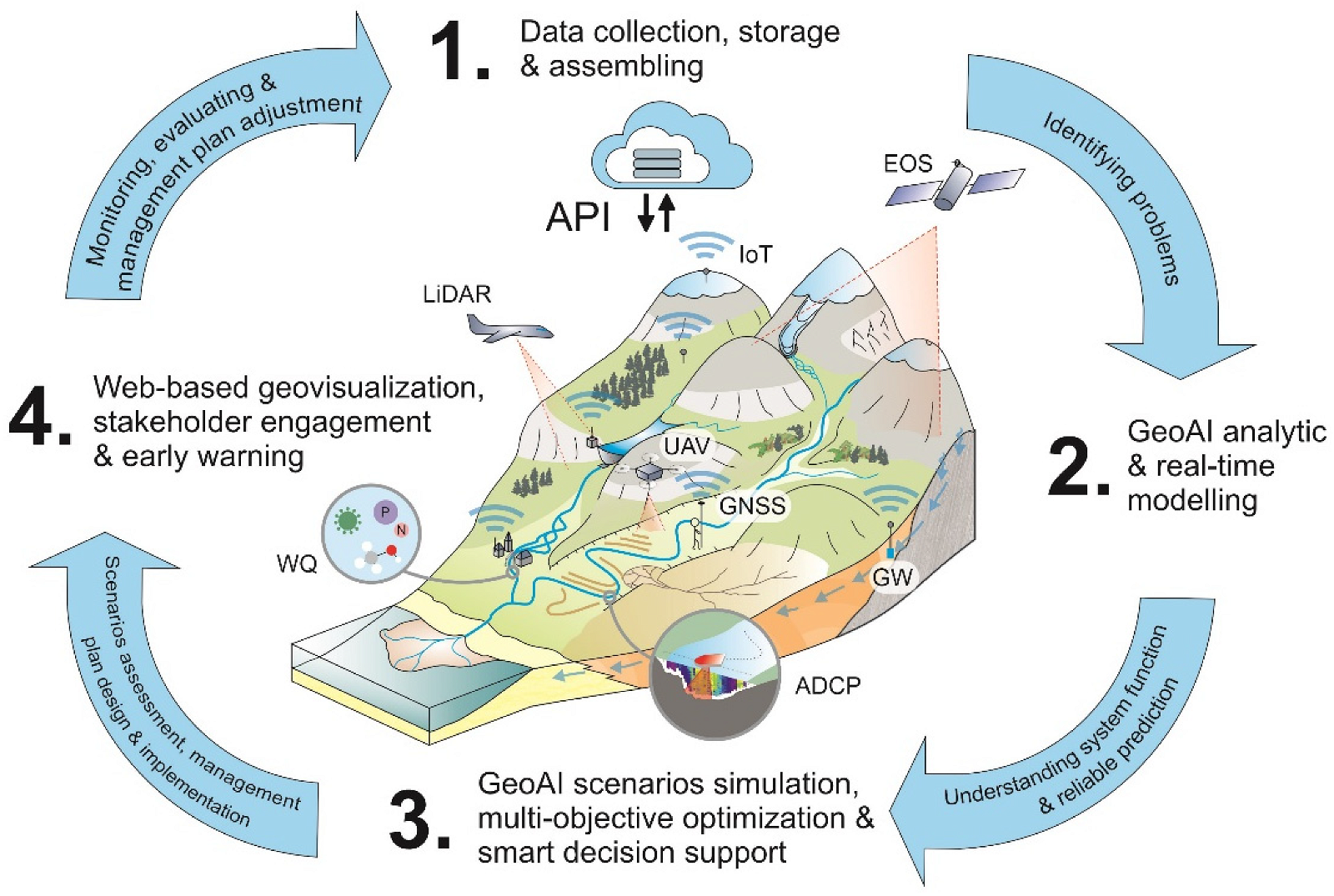
- Enhance data quality, consistency, and accuracy: Simplify manual data generation workflows by using automation to increase efficiency and lower costs.
- Speed up the time to situational awareness: Observe and analyse events, assets, and entities from sensors and sources such as video to enable faster response times and proactive decisions.
- Add location intelligence to decision-making: Make data-driven decisions with real-world awareness. Improve business outcomes with insight from spatial patterns and accurate predictions.
What is Random Forest Technology?
- Random forest technology is a type of machine learning algorithm that uses multiple decision trees to make predictions for classification or regression problems.
- It is based on the idea of ensemble learning, which means combining different models to improve the overall performance and accuracy.
- Researchers use historical data collected from various air quality monitoring stations in a city and apply the random forest algorithm to predict the Air Quality Index.

{Prelims – Awards – 2023/08/25} 69th National Film Awards
- Context (TH): The winners of the 69th National Film Awards were announced.
| Category | Winner |
| Best Feature Film | Rocketry |
| Best Popular Film Providing Wholesome Entertainment | RRR |
| Best Hindi Film | Sardar Udham |
| Best Children’s Film | Gandhi and Co |
National Film Awards
- National Film Awards, established in 1954, is an annual film award ceremony in India.
- The awards are administered by the Directorate of Film Festivals, an organization under the Ministry of Information and Broadcasting.
- These awards are presented by the President of India.

{Prelims – Sports – 2023/08/25} Chess World Cup
- Context (TH): Magnus Carlsen defeated R. Praggnanandhaa (India) in the Chess World Cup final.
- FIDE World Cup (Chess World Cup) is a chess tournament organised by the International Chess Federation (FIDE).
- This is Carlsen’s maiden Chess World Cup title.
- Carlson has won the World Championship five times and is currently ranked one in FIDE ranking.
- FIDE top players ranking:
- Viswanathan Anand: 9th
- D Gukesh: 11th
- R Praggnanandhaa: 29th





![PMF IAS Environment for UPSC 2022-23 [paperback] PMF IAS [Nov 30, 2021]…](https://pmfias.b-cdn.net/wp-content/uploads/2024/04/pmfiasenvironmentforupsc2022-23paperbackpmfiasnov302021.jpg)




